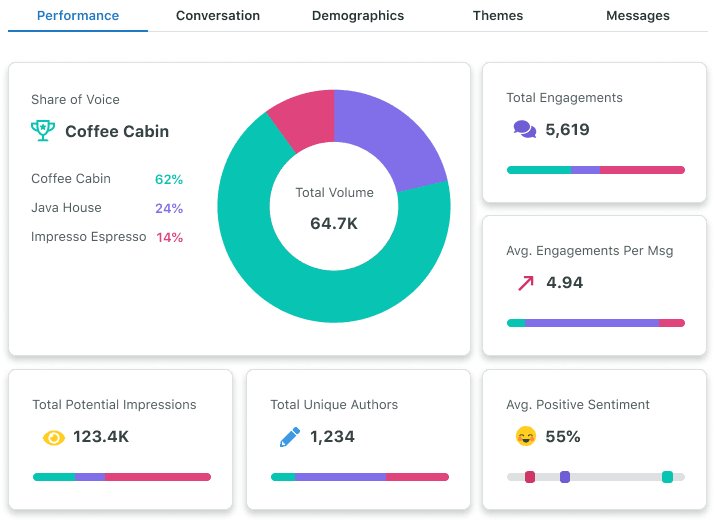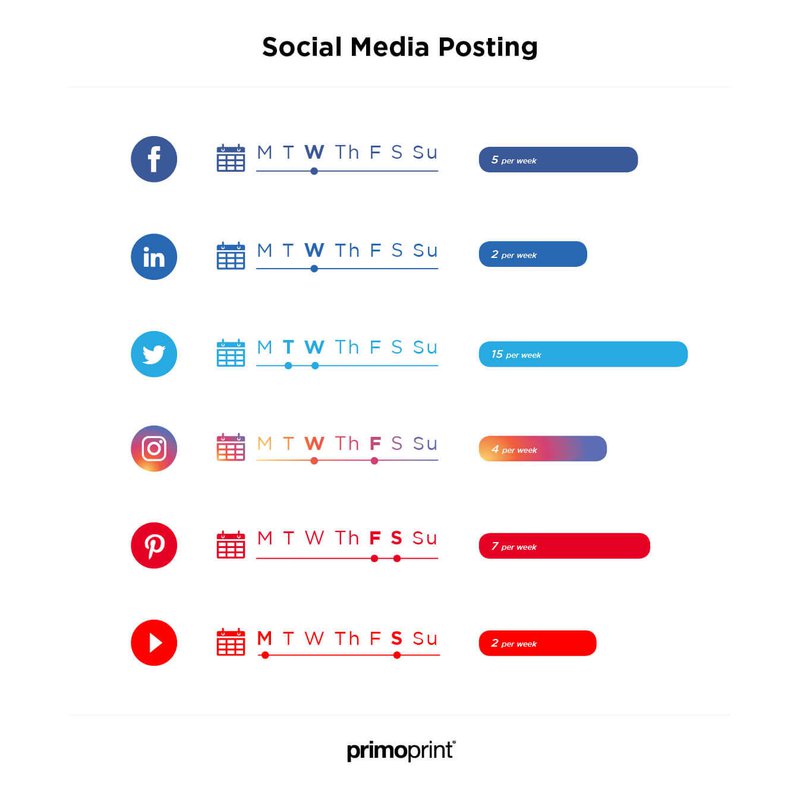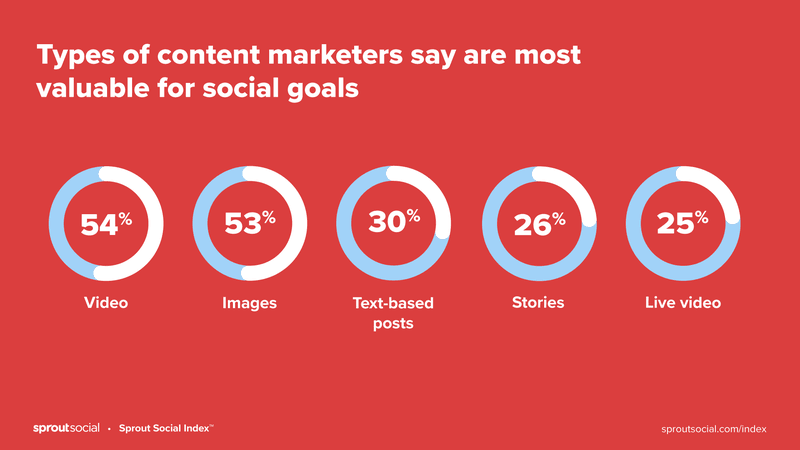How to Create a Killer Social Media Marketing Plan in 9 Easy Steps
Learn how to create a comprehensive social media marketing plan including - type of content, competitor research, how to set up a content calendar and much more.
Updated November 6, 2024

One of the most popular marketing jobs is social media management. That’s partly because most business owners are overwhelmed with posting content on all these platforms and engaging with their audience. They either don’t have the time or they don’t have a proper marketing plan template set up for their social campaigns.
Either way, it’s a full-time job and a difficult one to get right.
In this post, we show you how to create a comprehensive social media marketing plan and break it down into 9 easy steps.
Let’s dive in.
What is social media marketing?
Social media marketing is the use of social media platforms and websites to promote a product or service. Social media marketing helps businesses increase brand awareness, build engaged communities, measure how people feel about the brand, and increase sales.
What is a social media strategy?
A social media strategy is a document outlining your social media marketing goals and the tactics that you will use to achieve them. Strategies could include organic social media strategies, paid advertising, influencer marketing, sponsorships, and creating video content.
How to create a social media marketing strategy
Here is a step-by-step process for creating the perfect social media marketing plan for your business.
Step 1 - Come up with your social media goals
Like any marketing plan, your social media plan should start with your goals (ie your business goals). Determine which key performance indicators (KPIs) you're shooting for - whether that's increasing the traffic to your site or improving your brand awareness.
Once you have your goals written down it's time to choose the best social media channels for your business.
Determine which social networks you should be using
The type of social media platforms you use will depend on your social media goals. And there's no one size fits all answer here.
Most companies choose to focus on 2-3 key social media platforms, where they post very specific content that's targeted to those audiences. Some companies are platform generalists.
They schedule and publish content on all the major social media channels - Facebook, Twitter, LinkedIn, Instagram, Pinterest, etc. - just to keep their presence there and stay in good graces of the social media algorithms.
The goal is to determine which social media channel is best to reach your ideal customer and then go all-in on that channel.
Choose the type of social media campaigns
Next, choose the type of social media campaign you want to create. There are several types of campaigns you could use:
- Brand awareness campaign - this is where you are targeting the top of your marketing funnel with the aim to bring more awareness and engagement to your brand on social media and build your social media presence. If you're doing ads you are focused on profile views rather than clicks here.
- Sales / promotional campaign - this is a type of campaign that's focused on the bottom of your marketing funnel. You are very focused on clicks and click-through rates and usually include a promotion or product discount.
- Influencer campaign - this is a campaign that involves working with a social media influencer or a group of influencers to create social media content.
A business should use several types of campaigns in its social media efforts. So mix and match and continue testing and doubling down on what works.
Pro tip: need help creating content for your social media campaigns? Check out our list of the top social media content experts.
Up next, let's talk about your target audience.
Step 2 - Find out everything you can about your target audience
Every decision you take in your marketing strategy should be based on data, and for social media marketing, the most critical data is the information on your target customers.
Create audience personas
Study your target market and the entire user journey. You can do that in Google Analytics or a similar tool that shows where your traffic comes from, which channels they go through, and which pages they browse. Then, select a few of the main audience segments and create a persona for each one.
Talk to your customers
Don't stop there, you need to gather more first-party data on your customers, so go out and actually speak with them. You can interview a few of your customers or send a survey out. This will also help you determine who your happy customers are so you could get more positive reviews and user-generated content.
Step 3 - Conduct competitor research
Once you figure out who your ideal customer audience is and which social media networks they hang out on, it's time to look at your competitors. Pick the top 4-5 competitors and see what they do on social media. Look at their organic posts, advertising campaigns, influencer partnerships, and the hashtags and descriptions (captions) they publish.
Also, write down the various social media metrics - the number of followers, engagement rates, and the number of social media posts your competitors publish per day/week/month. You can use a social media analytics tool like Buffer, Hootsuite, or SproutSocial to get all of that information for your competitive analysis.
Here’s a look at SproutSocial in action:
Document some of the best posts your competitors have published and see if you could use those as inspiration for creating your own social content. Hint: you can’t see the click-through rate or the conversion rate (how many leads/customers each post gets), but you can look at the engagement rate.
Step 4 - Conduct a social media audit
Now that you've seen what some of your competitors do it's time to look at your own social media activities and conduct a comprehensive audit.
A social media audit includes looking at:
- The content types of your posts
- The social channels, creatives, and hashtags you use
- The type of campaigns you use
- Social media followers counts & engagement rates
- Your posting schedule (how frequently you post)
- Your social media ads
- Audience demographics and fake followers
Compare your own efforts with the competitive analysis you did earlier and see what you're missing and what you should improve on. This is key for any digital marketing strategy you create, whether that's for social media or for any other marketing channel.
Step 5 - Set up accounts and optimize profiles
Now that you've done your audit it's time to set up your social accounts. Make sure that each of your social media accounts is fully optimized. That means it's branded, has the profile and banner images, a description, all the right links, and the right hashtags.
Also, remember to link to your social media profiles on your email marketing campaigns. All of your emails should have your social media links at the bottom of each email.
Don't skip anything, optimizing your profiles is critical to your social media success.
Step 6 - Find inspiration
Now it’s time to create your social media posts. It can be hard to do something from scratch and you shouldn’t have to re-invent the wheel. Go find some inspiration online. Look at posts that are working for people.
Here are three great ways to do that.
1. Look at similar businesses
This doesn’t have to be competitors. Look at the top brands on social media, the ones that are the most successful on the specific channels that you’re looking to post content to. Find examples of brands (from any industry) that make the most engaging posts.
2. Find influencers in your niche
You could also look at the top influencers in your niche and see what kind of content they post. Look at the brands they work with and see what kind of collaborations they set up. Are they creating native videos? Are they making content in the form of a customer testimonial? Use these ideas to influence your own content.
3. Do a hashtag search
Another great way to get ideas is to search using hashtags. You can get great hashtag ideas from your competitors, other brands, or influencers. Alternatively, you could just look up the top hashtags for your niche on Google.
Step 7 - Create a social media calendar
Now that you have all of your brainstorming done it's time to put down your ideas into a social media content calendar. You may already have a calendar for your content strategy and this one is very similar.
Decide on how many posts you should be posting per channel per week and create a rough draft of each post and plop it on the schedule. You could do it in Google Sheets or similar task management software but it would be easier if you used one of the numerous social media management tools that are available.
For example, you could use Later to create an amazing Instagram calendar for your posts. It displays everything visually and lets you drag and drop your posts to customize their order.
When should you be posting?
Decide on the best times to post on each of your social channels. Again, this depends on your target audience, the target market, and the social media networks you’re using. The best times vary from year to year, based on user behavior, so do your research on each social network you’re using.
Pro tip: use a social media automation tool to schedule posts at specific times. Try it for a month and then check your analytics and A/B test.
How often should you be posting?
Each social network is different. For example, you should post once a day on Facebook and Instagram, 2-4 times a day for Twitter, and 10-25 times a day for Pinterest.
Guy Kawasaki, a famous author, investor, and Apple evangelist tweets four times a day at a minimum. Brightech, a home decor brand, achieved its height of 2 million monthly views on Pinterest while posting 6-10 pins per day.
StatusBrew has a great guide on how often you should post on each social network, based on the research of some of the biggest tools out there.
Step 8 - Create compelling content
The right social media marketing strategy should include different types of content like videos, images, Instagram stories, reels, UGC, polls, and much more. You should continue testing different content and see what works best for your audience.
Studies show that most marketers use videos and images the most, while Instagram stories and live videos are just gaining traction.
Pro tip: use social listening tools to see what is being said about your company or product on the internet. This will help you see your overall sentiment and get a clue about what type of content is working and what isn’t on your social channels.
Create a style guide for each channel
It’s really important to stick close to your brand look. So if you have a visual brand identity guide then use that as your go-to for the template you create for your social media profiles and individual posts
Engage with your audience
An estimated 67% of consumers use social networks like Facebook and Twitter to resolve issues with brands. Responding to customer messages and questions on social media should be a critical component of any successful social media marketing strategy.
Top tips to better engage with your audience:
- You should respond to direct messages and customer questions on a regular basis (studies show that 59% of brand replies on Twitter occur within 15 minutes).
- Use a social media inbox tool that displays all the messages from all of your social media channels in one place
- Write down any valuable insights you get from your audience and keep a record for your customer service and product teams
- Encourage your audience to engage with you by asking them to DM you
- Consider adding a text-only number that would let your customers text your business
Step 9 - Track performance and adjust your social strategy accordingly
Your social media marketing plan shouldn’t be a static document. It should be a living and breathing strategy that changes as your business evolves and as you get more information about your audience segments.
Your should adjust your social media strategy every 1-3 months, adding new content types, testing new creatives, and working with new influencers. This will help you grow your social presence and better reach your potential customers.
Need help? Get matched to the world’s top social media marketers
Reach out to us if you or your marketing team needs help to set up your social media strategy the right way. Here at Mayple, we have 600+ of the world’s top marketing experts. We can match your business with a Facebook or Instagram expert that has a proven success record managing social media for other brands in your niche.











